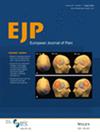Phenotyping Chronic Pain and Neuropathic Pain in Population Studies
Abstract
Background and Objective
Chronic pain is a major global health challenge with substantial individual and societal burden. Epidemiological studies are essential for understanding the scale of the problem and identifying approaches to management. However, they reveal wide variation in reported prevalence, largely due to variations in defining and phenotyping of pain, with estimates spanning roughly 10%–50% depending on wording, recall period, severity thresholds, sampling and ascertainment mode. This paper discusses phenotyping approaches in pain epidemiology, highlighting the need for pre-specified, transparent case definitions with harmonisation to improve comparability and reproducibility across studies.
Methods
We drew from epidemiological literature on chronic pain phenotyping, focusing on methodological approaches. Examples of successful phenotyping strategies from large cohorts and consortia were identified to illustrate scalable and reproducible methods.
Results
We identified ‘broad and shallow’ versus ‘deep and narrow’ approaches to phenotyping, and how they form part of a pyramid model. We explored this further using neuropathic pain as a worked example, with reference to the International Association for the Study of Pain's Special Interest Group on Neuropathic Pain (NeuPSIG) grading system for neuropathic pain and the Neuropathic Pain Phenotyping by International Consensus (NeuroPPIC) project, which aimed to offer a standardised and scalable phenotype suitable for epidemiological and genetic research. We also briefly reviewed other, modern approaches to phenotyping that have been developed, which combine large population samples, data integration and advanced statistical modelling, with the promise of enhanced comparability, and replication.
Conclusions
Consensus on phenotyping is needed. We have illustrated a structured, scalable approach to standardised phenotyping, supporting data integration, comparability and replication.
Significance Statement
This review highlights the critical importance of standardised phenotyping in chronic pain epidemiology. We introduce the pyramid model as a framework addressing key methodological gaps. Enabling scalable and reproducible phenotyping strengthens the foundation for future research and clinical translation, ultimately improving outcomes for people living with pain.


 求助内容:
求助内容: 应助结果提醒方式:
应助结果提醒方式:


